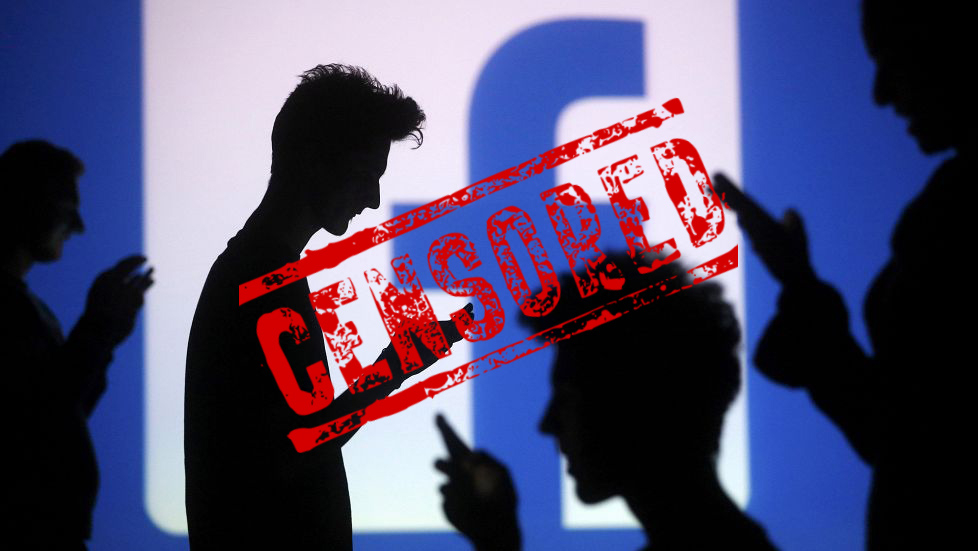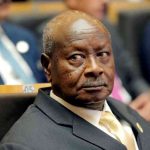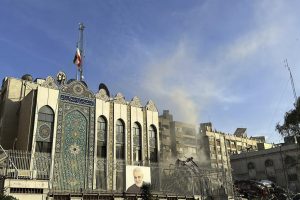The United States may have come to the end of traditional nuclear arms control. Since 1972 the United States and Russia have signed seven major nuclear weapons treaties, beginning with the SALT I agreement in 1972 and concluding with the 2010 New Start treaty; however, upwards of 65% of all nuclear warheads in the world still remain under no treaty limits, mainly because countries with such arsenals have no interest in agreeing to nor the technical means to verify, such controls.
Between 1972 and 2015, the number of U.S. and Russian deployed strategic nuclear weapons peaked at roughly 13,000 in each country’s arsenal, then declined to between 1,800-2,500. This reduction represents a cut of more than 80% in their respective deployed arsenals, a remarkable accomplishment.[1]
Despite this progress, advocates of what is termed “global zero” are pressing the United States to reduce even further its deployed and stockpiled weapons to no more than 500-1000 strategic weapons.
The problem, if examined closely, is that such proposals will simply make the military balance between the two nuclear powers, Russia and the United States, highly unstable.[2]
There is, for example, in Congress, one legislative proposal that adopts such a warhead ceiling. It would unilaterally eliminate American nuclear bombers and land-based missiles through attrition, while significantly cutting the planned twelve new nuclear-armed submarines to eight. So radical is this proposal that — while Russia, China, Iran and North Korea are arming themselves to the gills and seizing territory in regions such as the Arctic Circle, the South China Sea and the Middle East — it would reduce America’s nuclear “assets” from over 500 missiles, bombers and submarines to just a few nuclear-armed submarines.[3]
An adversary would thus only have to take out two submarine bases — Kings Bay and Bangor — and 2-3 submarines at sea to disarm the United States of its nuclear weapons altogether. Such a U.S. surrender to aggressive, expansionist, authoritarian powers would markedly heighten security dangers to the United States and its allies.

The U.S. nuclear “triad” consists of nuclear warheads mounted on platforms based at sea, in the air and on land.
|
Thankfully, there is a strong bipartisan consensus in Congress not to pursue such further reductions. This agreement seems in large part due to three factors: Russia’s increasing bellicose international behavior, a huge Russian advantage in both tactical nuclear weapons and warhead production capacity, and Russia’s massive nuclear modernization.[4]
Retired Admiral Richard Mies, the former Commander of the United States Strategic Command, says of the imbalance between the U.S. and Russian nuclear warhead stockpiles: “They reflect a growing disparity in total warheads because of the large Russian advantage in small, short range tactical nuclear warheads that are not subject to any arms control limits.”[5]
Further, according to the Admiral, “we have dramatically and unilaterally drawn down our tactical nuclear forces in contrast to Russia. To my knowledge, our unilateral disarmament initiatives have done little to promote similar initiatives in our potential adversaries, and at the same time, they have reduced our arms control negotiating leverage. In that sense, the lead-part of the ‘lead and hedge strategy’—the idea that if we lead, others will follow—has proven illusory.”
The Russians have between 2,000-6,000 tactical, or theater, nuclear weapons while the United States deploys 500 such weapons — all in the NATO European Theater.
A second area that concerns the Admiral is that Russia also has the capability to build upwards of 2,000 new nuclear warheads a year. The United States cannot at the moment produce nuclear warheads on a sustained basis beyond 10 or 12 a year, although there are approved plans to build a “responsive” nuclear infrastructure capable of doing more in the future.[6]
While Moscow’s nuclear arsenal exceeds that of the United States, there is no current arms control agreement to address these disparities. Monitoring such small nuclear weapons and weapons production capability by satellite is nearly impossible. Thus, the assurances that the U.S. can always “verify” deals with its adversaries is totally inoperable in this case.[7]
Are there better nuclear arms control and deterrent policies that the U.S. could pursue? Yes there are.
The U.S. first needs to start with a strategic pause in traditional U.S.-Russian strategic nuclear arms control. Thankfully, there is now a strong consensus in Congress to do just that.
The next item for the U.S. is to strengthen and maintain nuclear deterrence even as it explores possible future nuclear initiatives.
Given the extraordinarily heavy Russian and Chinese strategic nuclear modernization efforts — consisting of a combined four new land-based missile types, a new strategic nuclear bomber and cruise missile, and two new submarines and submarine-launched ballistic missiles — the U.S. faces a formidable nuclear threat that it must seriously continue to deter. By the time there has been a complete modernization (by 2020) of the Russian nuclear missile force, the U.S. will not yet have built a single new strategic nuclear weapon for its arsenal.[8]
Fortunately, the strong bipartisan Congressional consensus could remedy the alarming weakness in America’s nuclear deterrent. It is currently, across the board, roughly 35-40 years old.
The budget for this badly needed nuclear modernization is scheduled to increase, during the next decade, from $24 billion annually to $31 billion. If one compares this amount to the $65 billion that the U.S. spent on nuclear matters at the height of the Cold War, it is less than half. Certainly, by comparison, the cost required is a relatively modest, but necessary, investment in the nation’s security.
To help with this effort, the Congress and administration need to get rid of the defense budget caps. Removing them should be America’s #1 arms control and nuclear deterrent priority. If the U.S. funded the needed nuclear modernization effort within the budget caps, it would do grave harm to other conventional capabilities. The current administration and Congress should remove the caps now.[9]
What then should be next for a new President and Congress in 2017?
As one looks at the nuclear landscape, Great Britain, France, Israel, China, Pakistan, India, and North Korea have no legal limits on their nuclear arsenals. The U.S. and Russian deployed tactical and strategic reserve stockpile weapons also must be included in that category as they also are under no treaty limits.
Thus, up to as much as 65% of the world’s nuclear arsenals have no arms control limits. In rough terms then, many thousands of nuclear warheads — probably between 6,200-7,500 — now under the control of those nine nations, have no treaty or legal limits.[10]
How then should one focus on preventing the use of nuclear weapons, as well as seeking to control and limit those warheads beyond the reach of current traditional arms control agreements?
As the Yale professor Paul Bracken explains in his book, “The Second Nuclear Age: Strategy, Danger, and the New Power Politics,” controlling the central strategic nuclear weapons in the U.S. and Russia once made great sense: “Previously, all decisions involving mushroom clouds ran through Washington and Moscow. But, he explains, things are different now. “Today there are nuclear triggers in Islamabad and New Delhi, Pyongyang and Beijing… and maybe someday soon, Tehran.”
What to do?
Currently popular on the left is the conventional idea, most recently promoted by the completed nuclear non-proliferation review conference in New York last spring for a “Middle East nuclear free zone.” Such an idea is most likely to be avoided: it is primarily a rhetorical vehicle just to attack Israel’s nuclear deterrent, rather than a more useful effort to, for example, fully eliminate Iran’s nuclear capability, which the U.S. and the JCPOA are empowering.[11]
A more serious problem that needs to be addressed are the dangerous implications of Russia’s current reckless nuclear policy. Senior Russian officials repeatedly talk about using nuclear weapons in a crisis much as former Chicago Mayor Daley said about voting: it should be done “early and often.”
According to one study, since 2009 Russian officials have threatened to use nuclear weapons against the U.S. and its allies more than two dozen times.[12] Such Russian nuclear threats undermine the stability and security of NATO and America’s European and Asian allies. Such nuclear belligerence has also prompted the American administration to prepare new war plans for a potential Baltic battle against Russia.
In light of this danger, what useful work then might be done now and by the next administration?
First, Congress should approve, and potential leaders of the next administration should quickly announce, their support to fund and even accelerate the modernization of the U.S. nuclear deterrent. This should include capabilities that strengthen tactical nuclear deterrence, especially in Europe. The modern U.S. nuclear deterrent umbrella over more than 30 NATO allies is one of the prime reasons most of America’s allies have not sought to build nuclear weapons themselves — the U.S. makes them feel safe. That is a big “arms control” advantage, as it limits the number of nuclear-armed nations in Europe, thus making nuclear deterrence a more manageable task.
Second, the U.S. should lead an effort to seek both nuclear force structure and decision making transparency between India and Pakistan. If each country is reassured how the other would act in a crisis, there is less likelihood that these two nuclear-armed powers would use nuclear weapons against each other. Whatever the ambitions of each and notwithstanding Pakistan’s support of terrorist organizations, a nuclear exchange between the two nations would be catastrophic.
Third, the U.S. should enlist its Asian allies to press China for transparency in its nuclear expenditures, nuclear force structure and nuclear deterrent policies. Some have likened this quest to asking Al Capone how many guns he has. But the US should still pursue such information. Currently, estimates of China’s nuclear forces are little more than a guessing game among China “experts.” As China expert and former top Department of Defense official Michael Pillsbury warned recently, China is hiding its hegemonic ambitions while steadily modernizing its nuclear forces.[13]
Fourth, the U.S. Congress should establish an outside-Iran monitoring group with bipartisan and independent experts — a “Red Team” — with necessary capabilities and clearances and access to intelligence data on Iran. The group would assess on a regular basis the implementation of the JCPOA. This effort should highlight Iran’s nuclear, terrorist and missile-related actions, and recommend to Congress and the administration corrective changes to American and allied policy.
Critical to this effort should be the enhancement of the 2003 Proliferation Security Initiative, the better to interdict nuclear and WMD technology being shipped to and from rogue states such as Iran, North Korea, Russia and China.
And fifth, most importantly, with the North Korean, Chinese and Russian nuclear and missile capabilities in mind, the United States and its allies should, as quickly as possible, take action to protect the United States and its electrical grid from missile-delivered nuclear electro-magnetic pulse (EMP) threats, especially with the adoption of both the Shield Act and the bipartisan-supported Critical Infrastructure Protection Act.
The U.S. should also adopt a global missile defense plan, including enhanced U.S.-based missile defenses that can deal with EMP threats. Of particular concern is that the U.S. has no missile radar capability looking south from the continental United States, as well as no advanced missile defense bases. Missile defense is a strong component of arms control as well as deterrent policy in that it can dissuade U.S. adversaries from building dangerous missile arsenals and also protect the U.S. and it from coercive and terrorist nuclear missile threats.[14]
Even if any one of these five objectives would be a formidable challenge to a new administration, it is necessary to work on all of them to improve the security and safety of America and its allies. This is indeed an expanded view of arms control but in this nuclear age, it is an American security imperative.[15]
[1] The 2010 New Start treaty between the U.S. and Russia calls for a reduction in deployed strategic nuclear warheads of no more than 1550. But because bombers are only calculated at one warhead, (even if the planes carry 8-12 such weapons), the actual “deployed” level is higher than the official ceiling. The treaty also only limits strategic nuclear weapons “in the field” and actually being carried (“deployed”) on long-range bombers, silo and mobile land-based missiles and strategic submarine-launched ballistic missiles. Stockpiled, reserve and tactical nuclear warheads are not limited.
[2] The proposal to reduce the U.S. strategic deterrent to 500-1000 warheads has been proposed by many American “arms control” organizations, including Global Zero, Ploughshares Fund, the Arms Control Association, the Federation of American Scientists, and the Union of Concerned Scientists. See also Maxwell paper #54 by Lt Colonel David Baylor, “Consideration of US Nuclear Force Structure Under 1000 Warheads.”
[3] Senator Ed Markey (D-MA) has proposed that the U.S. nuclear arsenal be unilaterally reduced to 8 submarines of which roughly 2-3 might be on patrol at sea at any one time given Navy operational requirements. This quantity would reduce the entirety of the U.S. nuclear deterrent to five targets — three submarines at sea and two Navy bases where the submarines would be home-ported.
[4] Tactical nuclear warheads are defined as those weapons carried by short-range platforms such as fighter-bombers, rockets and missiles. Satellites generally cannot determine the number of warheads being carried by such platforms, thereby making it virtually impossible to verify any kind of treaty limits on such weapons. In addition, without extraordinary cooperation including on-site inspections, there are also no means by satellite and other verification measures accurately to determine the production capability of the Russians.
[5] Undersea Warfare: “The Strategic Deterrence Mission: Ensuring a Strong Foundation for America’s Security” by Admiral (Ret) Richard Mies, Spring 2012. All the quotes in this section from Admiral Mies are from this article or personal communication with the author.
[6] The U.S. government has plans to increase the U.S. production capability of nuclear warhead pits to between 60-85 per year by 2030. According to top nuclear expert Jon Medalia of the Library of Congress, “the Department of Defense (DOD) requires the National Nuclear Security Administration (NNSA) to have the capacity to make 50-80 pits per year by 2030.” He also noted in an earlier report “the FY2015 National Defense Authorization Act requires the National Nuclear Security Administration (NNSA), which manages the nuclear weapons program, to produce them at a rate of 80 pits per year for 90 days in 2027.” The conference report for the FY2016 National Defense Authorization Act, released September 30, 2015, states that “the capability and capacity to produce, at minimum, 50 to 80 pits per year, is a national security priority.” It does not contain a date-certain for this to happen, but states that “delaying creation of a modern, responsive nuclear infrastructure until the 2030s is an unacceptable risk to the nuclear deterrent and the national security of the United States.”
[7] Verification of the number of relatively small nuclear warheads or munitions that can be carried by relatively short-range missiles and airplanes is impossible to determine by technical means such as satellites.
[8] Russian and Chinese nuclear modernization programs have been detailed in two presentations on May 26, 2105: Rick Fisher, “China’s Nuclear Build-Up—Implications for American Security Strategy” and April 14, 2015, Mark Schneider, “Russian Nuclear Modernization. The Ukraine Crisis and the Threat to NATO.” Mark Schneider, of the National Institute of Public Policy, also addresses the question of whether lack of revenue may impact the Russian modernization plans:
“There may be some impact, but the bottom line is that nuclear weapons are their highest priority and the last thing that will be cut. They [the Russians] have just announced a 17 percent increase in nuclear missile production. The disparity in modernization is monumental. Right now there is not a single new strategic missile or bomber in production in the U.S. Russia says it has modernized half of its strategic missile force and will complete modernization by 2021. They will also start adding newly produced Tu-160 strategic bombers by 2021. Even if you assume a two or three year delay by Russia, the U.S. will not add a single new strategic nuclear weapon before there has been a complete modernization of the Russian nuclear missile force.”







































